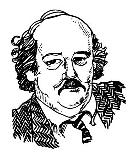(Syndicated to Kansas newspapers Nov. 16, 2015)
 Statehouse habitués are gearing up for another session where the most frequently used phrase will be “spent in the classroom.”
Statehouse habitués are gearing up for another session where the most frequently used phrase will be “spent in the classroom.”
That’s the school finance phrase that draws the most attention, that sounds on its face as a reasonable use of those state dollars. You send your kids to school, and when they come home seven hours later, well, you want to know that all those $4 billion plus in state tax dollars went to teach them things they didn’t know when they arrived.
That’s where this “spent in the classroom” phrase comes in. Everybody wants tax dollars for public education to be spent on educating his/her kids or grandkids or neighbors’ kids—in those classrooms.
But there’s a lot that school districts do that doesn’t involve direct pupil-to-teacher contact in a classroom.
The kids ride a bus to school? That’s not “in the classroom” spending, according to many legislators—but isn’t talked about much because most legislators’ constituents’ school districts bus kids to school, where the classrooms are.
And, if there’s a lunch program, well, those lunches aren’t generally eaten in the classroom, and the halls and classrooms that are cleaned, well, that’s not direct teacher-to-pupil contact.
Oh, and don’t forget that someone manages those schools, makes sure that the furnace is running, the windows aren’t broken, that equipment is bought at the best price, bills are paid and the employees who work for your local unified school district are paid, and their checks are double-checked and the deductions for taxes made.
All that non-classroom spending is important. There is probably some magic percentage that only accountants know that defines an efficiently run school district.
But, in a state with school districts ranging from 80 students to 47,000 students, we’re figuring that the “spent in the classroom” vs. “not spent in the classroom” costs are going to vary dramatically. It’s the management costs of a giant district spread over more pupils. That’s why a gallon jug of milk costs less than buying eight pint cartons of milk; it’s called economies of scale.
But about all we’re hearing from lawmakers is “in the classroom.”
That catch phrase is getting a little old, and while total costs are the least complicated for legislators to get a handle on, it’s probably not as important as how well the student do, what they learn, and are they going to know enough to go on to post-secondary schools or maybe just get a job and move out.
The upcoming legislative session is where the real work will start on assembling a new school finance formula to replace the interim block grant program which enters its second and likely last year for the 2016-17 school year.
That block grant program essentially takes state aid the districts received in the 2014-2015 school year and just continues it for two years, regardless of changes in makeup of the school districts and numbers of pupils (if enrollment growth is less than 2 percent), and tells the districts to spend it however they think they need to provide an education to their pupils.
But don’t forget, that even with a relatively clean sheet of paper to start with, much of what we’ll hear about financing public education next session is going to be about “in the classroom” with whatever links can be established to performance of students—at the lowest cost to the state treasury.
Maybe that phrase will work out, but we’re trying to remember the last time anyone got cheaper drinks by taking their own glass, ice and an olive on a toothpick into a bar trying to pay for just the vodka and vermouth.
